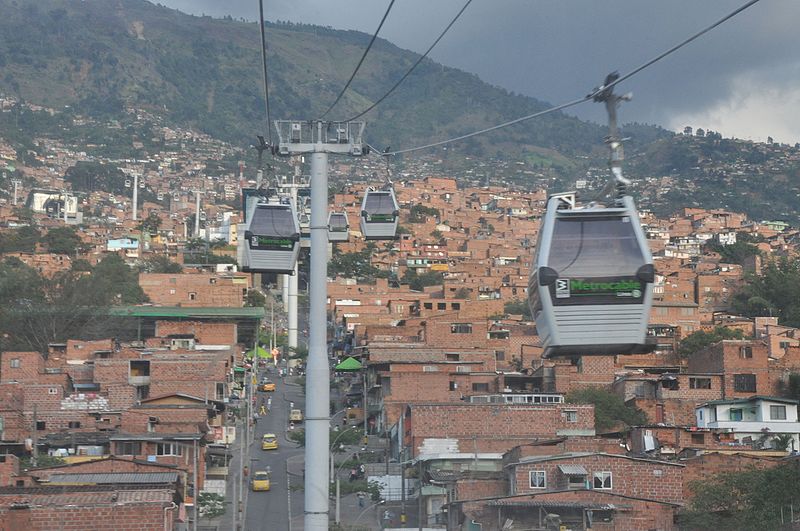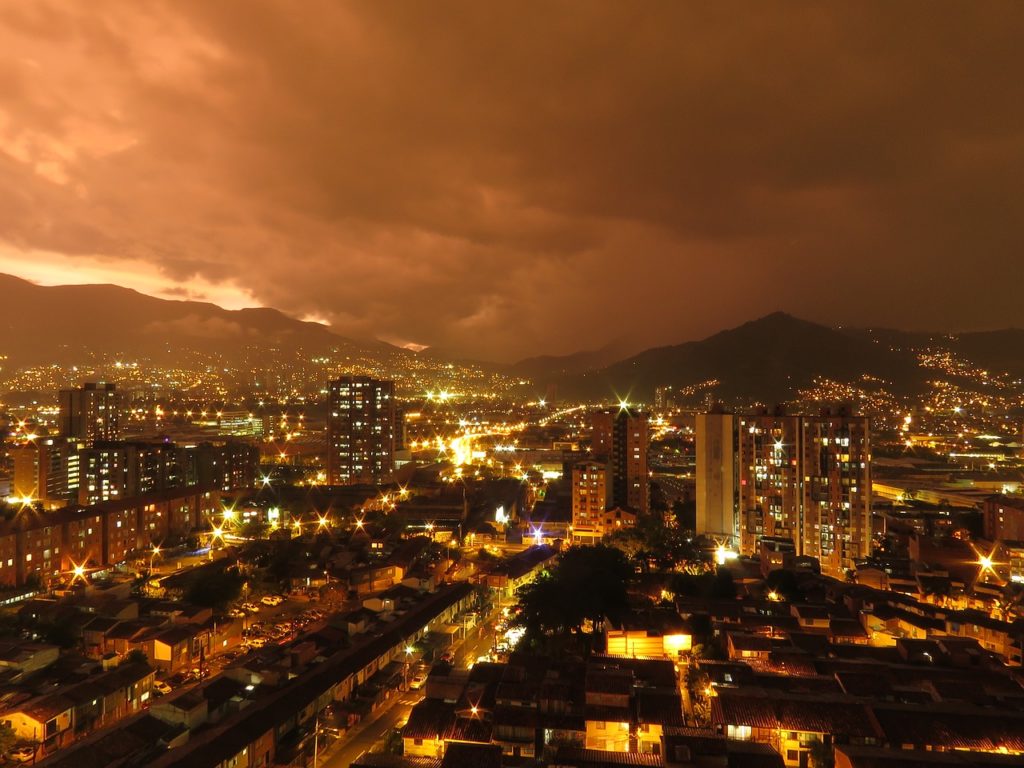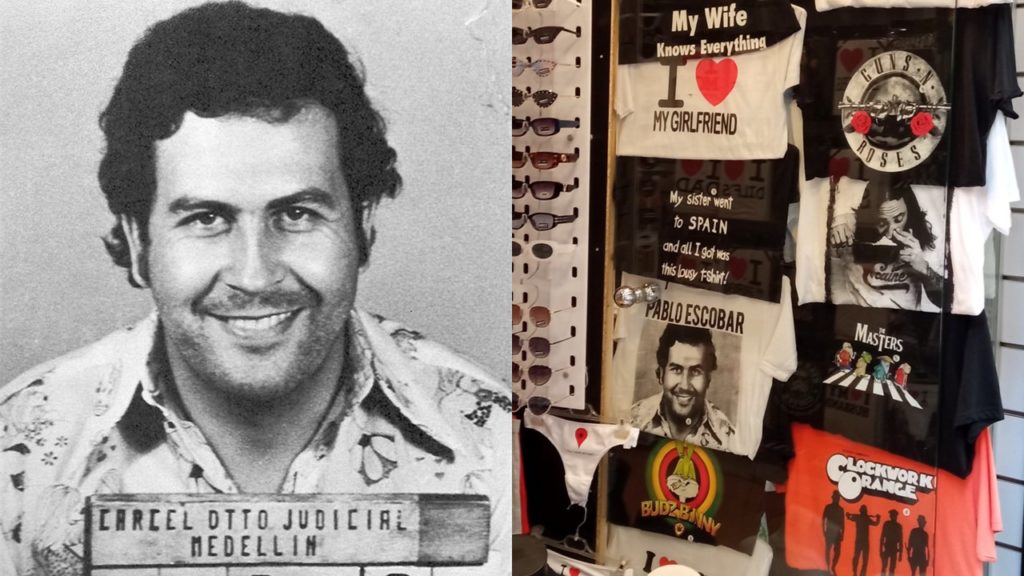
Medellin, in the heart of Colombia, once under the dark shadow of drug lord Pablo Escobar, has emerged as a shining example of urban innovation and social change. This transformation represents not just improved security, but also the city’s resiliency and forward-thinking attitude to the difficulties it has faced.
A journey through time
The narrative of Medellin’s evolution started with the fall of Pablo Escobar in 1993, signaling the end of a harrowing chapter characterized by violence, drug trafficking, and fear. This era saw Medellin grappling with unprecedented homicide rates, as rival drug cartels battled for supremacy, placing the city at the epicenter of the global drug trade. The pervasive violence and instability permeated every facet of Medellin society, casting a long shadow over the city’s future prospects.

In the aftermath of Escobar’s demise, Medellin embarked on a path of profound change, driven by a collective desire to reclaim the city from the clutches of narco-violence. This journey has been neither swift nor straightforward. It has required the concerted effort of community leaders, government officials, and ordinary citizens, all united by a vision of peace and progress.
Central to this transformation was the strategic deployment of urban planning and social initiatives aimed at addressing the root causes of violence and inequality. Recognizing the need to integrate the city’s marginalized communities into its social and economic fabric, the local government invested in comprehensive urban development projects. These included not only infrastructural improvements but also educational and cultural programs designed to foster a sense of community and belonging.
The implementation of innovative public transportation systems, such as the MetroCable, played a pivotal role in knitting together the city’s disparate areas, enabling residents of hillside communities to access economic opportunities and social services in the city center. Such initiatives were complemented by the creation of public spaces, parks, and libraries, which served as communal hubs for education, culture, and recreation, further weaving together the social tapestry of the city.

Infrastructure and social investment: the core of change
One of the most emblematic projects is the MetroCable system, a network of cable cars designed to connect the city’s marginalized hillside communities with its economic and cultural centers. This initiative has drastically reduced commute times, provided safe and reliable transportation, and facilitated access to education and employment opportunities for the city’s most vulnerable populations.
Beyond transportation, Medellin has invested in the development of public spaces that foster community engagement and cultural expression. Parks, libraries, and community centers have become hubs of social and educational activities, accessible to all citizens regardless of their socioeconomic status. These spaces are not just recreational areas but platforms for community building and empowerment, offering various programs and services that cater to the diverse needs of Medellin’s inhabitants.

Recognizing the transformative power of education, Medellin has prioritized the expansion of educational facilities and programs. Innovative institutions, such as the Parque Explora and the Planetarium, provide interactive learning experiences in science and technology, aiming to inspire the next generation of thinkers and leaders. Similarly, the network of library parks, strategically located in previously under-served districts, serve as both educational resources and symbols of the city’s investment in knowledge and culture.
Integral to Medellin’s strategy is the emphasis on social programs aimed at empowering communities, particularly those affected by the city’s turbulent past. Initiatives focusing on entrepreneurship, youth engagement, and violence prevention have been instrumental in promoting social cohesion and economic development. By directly addressing the root causes of inequality and exclusion, these programs have played a critical role in reducing crime rates and fostering a sense of belonging and pride among residents.
The international spotlight and the road ahead
Medellin’s transformation has secured its position in the international spotlight, highlighting the city as a symbol of urban renewal and social innovation. The accolades and recognition, including the Urban Land Institute’s Lee Kuan Yew World City Prize in 2016, emphasize the city’s achievements in innovative urban planning and its dedication to social equity. Nonetheless, the path forward for Medellin is not without challenges.
Despite its achievements, factors still exist in Medellin that could hinder its advancement. The city is marked by socioeconomic differences, with some areas struggling with poverty and a lack of basic services. Although violence has decreased significantly, it hasn’t disappeared completely.

Gangs in Medellin often engage in various illegal activities, including drug trafficking, extortion, and territorial control. These groups exert influence over certain areas, contributing to social instability and fear among residents. The city’s efforts to dismantle these networks and integrate marginalized communities through social programs and law enforcement have seen some success, but the resilience of these criminal organizations poses ongoing challenges.
The presence of gangs and violence has a profound impact on the daily lives of Medellin’s residents, particularly in poorer neighborhoods. It affects access to education, employment opportunities, and overall quality of life. The fear of violence restricts movement and limits the economic development of certain areas, creating cycles of poverty and exclusion.
Rapid urbanization and population increases are putting pressure on the city’s infrastructure and the delivery of public services. At the same time, environmental sustainability has become a crucial concern. The city is taking steps to tackle pollution and mitigate the effects of climate change, aiming to protect its communities and natural habitats.
As Medellin looks to the future, it recognizes the importance of continuing to embrace innovation and inclusivity in its urban development strategies. Strengthening the educational system, expanding economic opportunities, and enhancing public safety remain priorities. The city is also exploring sustainable urban solutions, such as green architecture and renewable energy, to address environmental concerns.

Engaging communities in the decision-making process is crucial for ensuring that development remains inclusive and benefits all residents. By leveraging technology and fostering partnerships between the public sector, private industry, and civil society, Medellin aims to create a model of sustainable urban growth that can inspire cities worldwide.
In facing these challenges, Medellin’s journey serves as a powerful reminder of what can be achieved through resilience, innovation, and a deep commitment to social progress. As the city continues to evolve, it stands as a testament to the possibility of transformation, offering valuable lessons for urban development in the 21st century.
See all the latest news from Colombia and the world at ColombiaOne.com. Contact our newsroom to report an update or send your story, photos and videos. Follow Colombia One on Google News, Facebook, Instagram, and subscribe here to our newsletter.

